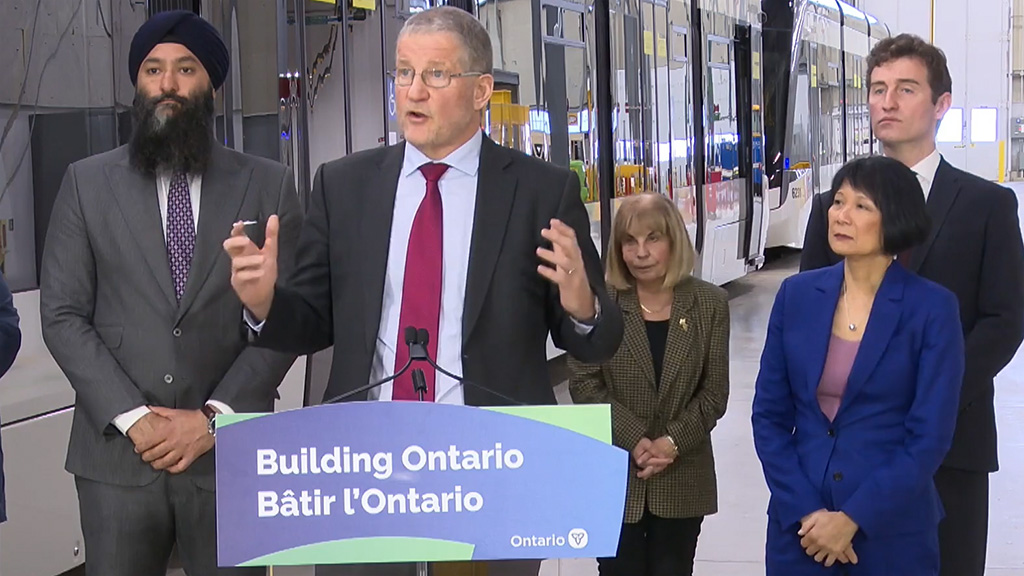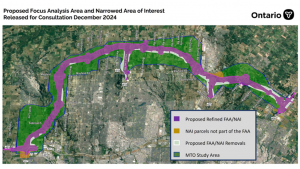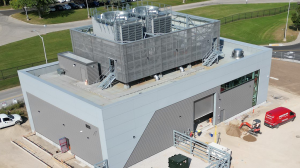Although major construction work is complete on the Eglinton Crosstown LRT, many issues still remain and delays persist.
Currently one of the major issues is software defects in the signalling and train control system and the rectification of those defects by the consortium building the project, reported Metrolinx CEO Phil Verster recently.
He provided a progress update on March 25 during a transit announcement by the Ontario government on issuing a Request for Qualifications for the design and construction of seven stations along the Eglinton Crosstown West Extension (ECWE). When reporters asked for an update on the Eglinton Crosstown LRT, Verster said: “All of the major construction is complete and in some of our stations there are still smaller works such as replacing broken tiles and water leakage.
“The system integration tests, which have always been the most critical consideration for us, which really is the critical path, was 15 per cent complete when I saw you last at the media technical meeting in December. It’s now just over 50 per cent complete, which is a lot of progress in the three months that we’ve had.” The project, which began in 2011, was supposed to be complete in 2020 but has faced significant delays and cost overruns over the years.
“What concerns me most though is the software defects in the signalling and train control system and the rectification of those defects by CTS and Alstom,” Verster noted. “They’re making good progress with it but it’s not as fast as we would like it to be.”
Software continues to be tested to address the defects.
“From as late as last week, release six of the software started to be tested,” Verster explained. “It’ll fix some of the defects but release seven is already planned for June. What’s really important about the signalling and train control system is it’s really the nerve centre of moving trains punctually and on time as well as safely so it’s really critical that that system works well.”
Next steps for the beleaguered project
Once the system is stabilized there are 20 TTC trainers that will be trained.
After that, there are 90 operators for TTC that will be trained in three groups.
“That gives us a lot of progress towards what we call revenue service demonstration, which is a period of a month before we go into a bedding-in period and into customer service,” Verster said.
Also important is the progress that’s been made on the occupancy certificates.
“There are 41 occupancy certificates that we need across the whole of the route and 36 of those are now awarded,” Verster explained. “The latest ones that were included in that are Kennedy, Avenue and Cedarvale. One of the biggest ones that is outstanding is clearly Eglinton Station itself. This facility nearly has its occupancy permits. There are a few deficiency works that must be resolved and this one will also be in place.”
��������ion certificates top of mind
According to Verster, his second biggest concern is the construction certificates that all teams are putting effort into obtaining.
“On our update, we showed you five work streams. This is one of the key workstreams that actually certifies that the project has been designed right, built right, delivered right and tested right,” Verster said. “We’ve got one of the 46 construction certificates at this stage. Clearly there is a lot of others in flight but this must be completed on time.
“The schedule is moving forward relentlessly and once we are within three months of an opening date we’ll declare that date,” he added.
The stations, rail, and systems (SRS) contract announced March 25 includes the design and construction of all seven stations along the ECWE, as well as connecting the line to the existing Eglinton Crosstown LRT at Mount Dennis Station. Tunnelling work for the line began in 2022 with two tunnel boring machines digging east from the launch site near Renforth Drive to the extraction shaft at Scarlett Road. Five kilometres of the tunnel boring has already been completed.
“It’s our expectation that the tunnelling, which is now back and moving forward, will complete in the middle to back end of April with the first tunnel boring machine breaking through into the extraction shaft and then the second tunnel boring machine a couple of weeks later,” said Verster. “We’re very close.”
Follow the author on X/Twitter .








Recent Comments
comments for this post are closed